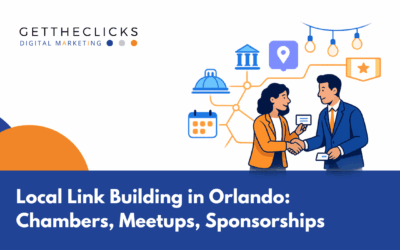Website speed is crucial to user engagement, search engine rankings, and overall performance. A few seconds of delay in page load time can result in a big drop in conversions. Browser caching as part of web design is a simple but powerful way to speed up your website. It stores frequently used resources like images and scripts on the user’s device, reducing load times, giving a seamless user experience, and reducing server load.
What’s Browser Caching?
Browser caching is the process of storing website resources like images, CSS, and JavaScript files on the user’s device. When the user revisits the site, the browser fetches these files from the cache instead of requesting them from the server.
For example, if a page has the same header image on multiple pages, the browser downloads it once and reuses the cached version. This saves bandwidth and gives the user a smoother experience across different pages of your website. By reducing the number of redundant requests, browser caching also reduces latency and makes browsing more efficient.
How Browser Caching Works
When a user visits your site for the first time, the browser requests the essential resources from the server—HTML, CSS, JavaScript, and media files. Along with these files, the server sends HTTP headers with caching directives. These directives tell the browser what to store and for how long.
The key components are:
- Expires Header: Specifies a date after which the cached resource is considered stale.
- Cache-Control Header: Tells the browser how long a resource is fresh or should be bypassed completely.
- ETag (Entity Tag): A unique identifier to check if the cached resource matches the server version.
Benefits of Browser Caching
Reduced Server Load: By reducing the number of requests, caching takes the load off your server, giving you resources for other tasks. It is instrumental during high-traffic events like sales or product launches.
Better User Experience: Load times directly impact user satisfaction. Pages that load fast keep visitors longer and encourage them to dig deeper.
SEO Boost: Search engines like Google prefer fast-loading websites, so caching is a key factor in getting better rankings. Sites with lower bounce rates and better user metrics perform better in search results.
Reduced Bandwidth Costs: Caching can help businesses reduce hosting costs by reducing the amount of data transferred between server and user devices.
Caching Mechanisms
Caching mechanisms are the backbone of a fast and efficient website. They determine how resources are stored, for how long, and when they need to be updated. Understanding and configuring these mechanisms effectively can drastically improve your site’s performance. Let’s dive deeper into the main caching mechanisms:
Cache-Control Headers: These control how resources are cached by browsers, including max-age (time resources can stay in the cache) and directives like “no-cache” or “must-revalidate”
Expires Headers: They specify an exact date for cached resources. When this date is reached, the browser fetches a fresh copy from the server.
ETag Headers: These allow browsers to check if the cached content matches the server version so users see the latest content.
Caching Types: How Resources Are Stored for Speed
Caching isn’t a one-size-fits-all solution. Different caching types are designed to optimize various aspects of website performance, from reducing load times for individual users to improving delivery speed across entire networks. Understanding these caching types allows you to create a tailored approach to meet your website’s specific needs and user base. Here are the three primary types of caching and how they work:
Browser Cache
Browser caching stores static files, such as images, stylesheets, and JavaScript, directly on the user’s device. This allows returning visitors to load previously accessed resources locally, eliminating the need to download them again from the server.
Proxy Cache
Proxy caching operates at the network level, storing resources in intermediate servers managed by Internet Service Providers (ISPs). When multiple users request the same file, the proxy cache serves it without contacting the origin server.
This reduces latency and decreases the load on the main server, making it an efficient solution for websites with high traffic or regional clusters of users. Proxy caching is particularly beneficial for delivering frequently accessed resources, such as popular articles or video thumbnails, to many users simultaneously.
CDN Cache
Content Delivery Networks (CDNs) take caching to a global scale by storing copies of your website’s content on servers worldwide. When users request a resource, the CDN directs them to the nearest server, minimizing geographic delays and improving load times.
This type of caching is indispensable for websites with an international audience. For instance, a visitor from Asia can load resources from a server in their region instead of waiting for files to travel from a server based in the U.S. By leveraging CDNs; businesses can provide consistent performance regardless of where their users are located.
Best Practices for Web Page Caching
To cache effectively:
- Define Durations by Resource Type: Images and CSS files can have long cache durations, and blog posts can have shorter durations.
- Set Clear Expiration Policies: Use expires headers to define when cached resources should be refreshed so outdated content is not shown.
- Combine and Minify Files: Compress CSS and JavaScript files to reduce their size and number of resources. This improves caching and overall speed.
- Monitor Cache Behavior: Check caching is working as expected using tools like Lighthouse, PageSpeed Insights, or browser developer tools.
Testing and Avoiding Common Mistakes
In testing Caching, use developer tools to inspect HTTP headers and see if resources are being served from the cache. Online tools like DebugBear, GTmetrix, or Pingdom can also give you insights into caching.
Avoiding common caching mistakes is crucial for maintaining an efficient and user-friendly website. Over-caching can make users see outdated content, especially for frequently updated resources like promotional banners or news updates. Hence, it’s essential to set appropriate expiration rules for such files.
On the other hand, under-caching static files like images or stylesheets results in unnecessary server requests and slower load times, undermining the benefits of caching.
Additionally, misconfigured cache-control headers can disrupt the caching process altogether, leading to slower performance and potential user frustration. Careful planning and testing can help avoid these pitfalls and ensure your caching strategy works effectively.
Caching and SEO
Caching plays a significant role in SEO by enhancing website speed. It also improves key user metrics like session duration and bounce rate—both essential factors for search engine rankings.
However, caching must be implemented carefully to avoid SEO pitfalls. Ensuring fresh content is critical. To achieve this, create headers like “must-revalidate” to prompt the browser to check for updates to critical resources. This provides users and search engines with the latest version.
It’s also important to avoid duplicate content issues by preventing cached pages from conflicting with updated versions indexed by search engines.
Another effective strategy is Using Content Delivery Networks (CDNs), which deliver fast, consistent content to users across regions while maintaining cache integrity. Properly configured caching boosts performance and supports a strong SEO foundation.
Get The Clicks Can Help You Speed Up Your Website!
Want to speed up your website? Get The Clicks has the tools and services to optimize your caching, user experience, and SEO. Contact us today to get started with our caching solutions for faster website loading times!





